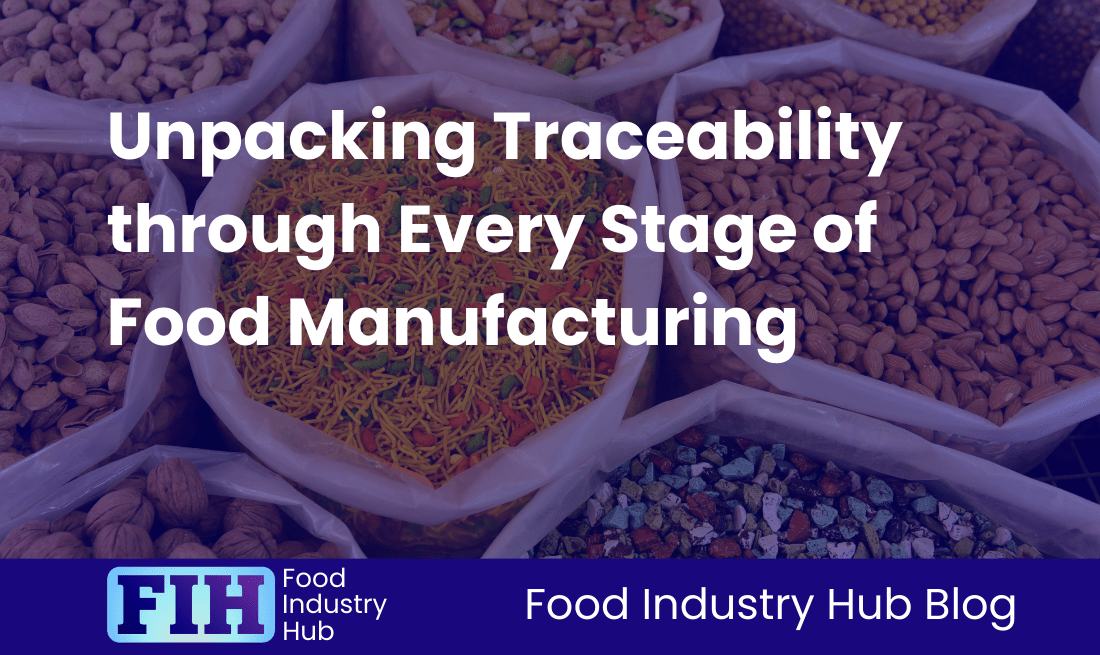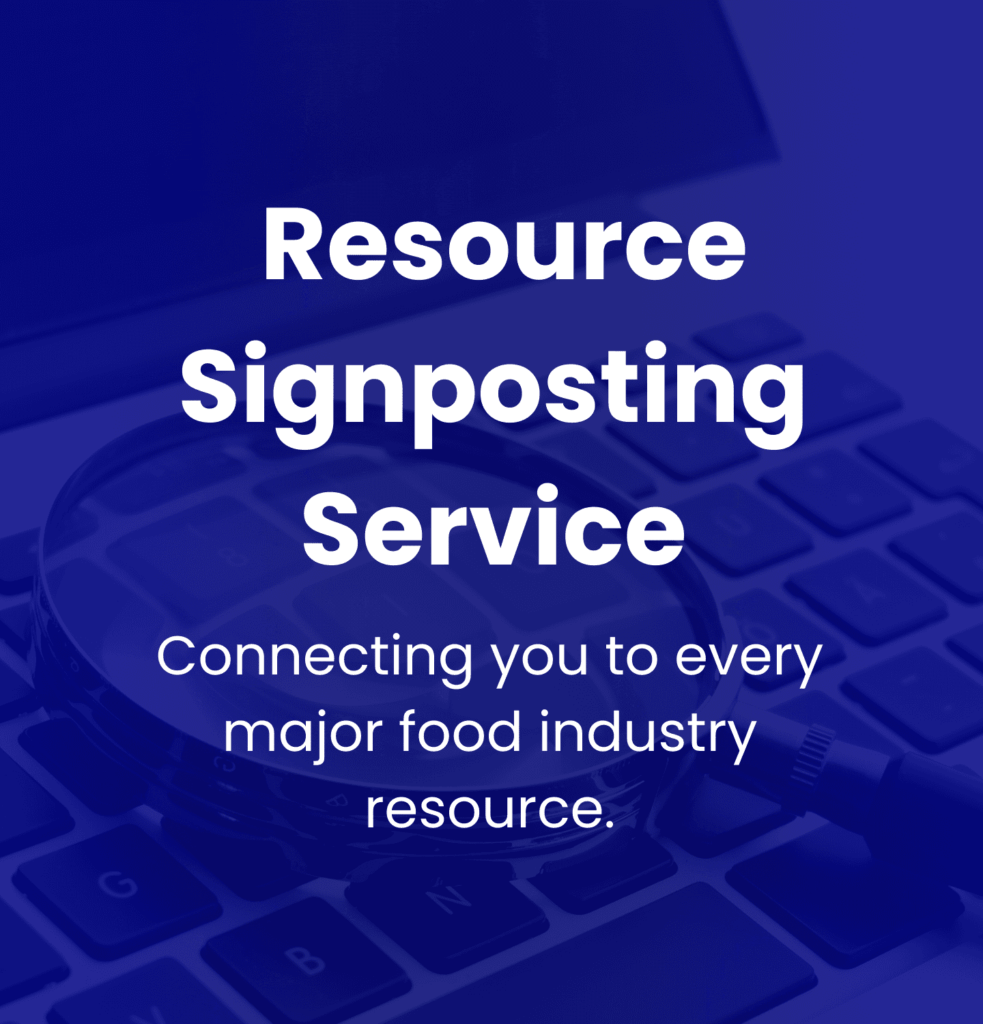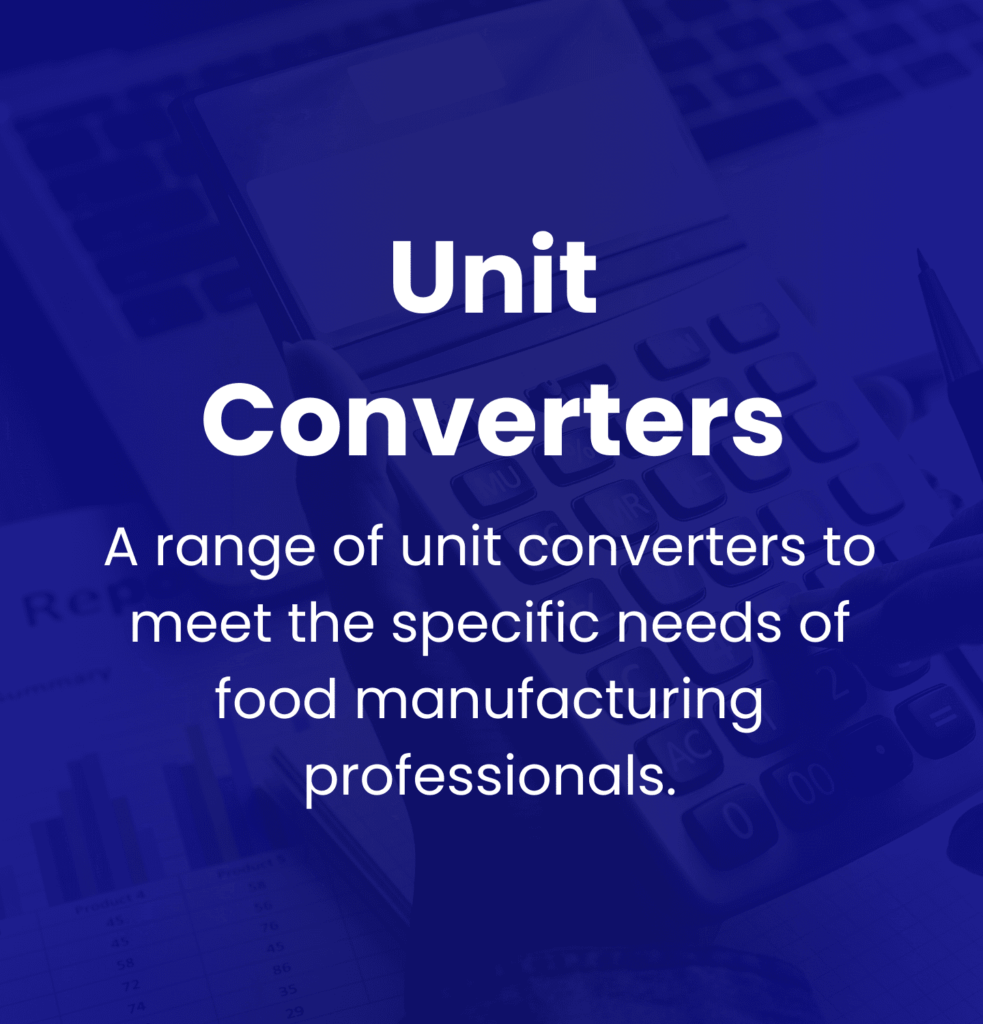Know: Batch Processing vs Continuous Production
Contents
Introduction
Key Takeaways
Fundamental Operational Mechanisms
Food Safety and Quality Control in Batch vs Continuous Production
Regulatory and Legal Frameworks Impacting Batch vs Continuous Production
Considerations for Supply Chain and Traceability in Batch vs Continuous Production
Cost & Operational Efficiency: Batch vs Continuous Production
Technology & Automation in Batch vs Continuous Systems
Global Regulatory Influences
Conclusion
Introduction
In the landscape of food manufacturing, discerning the variances between batch processing and continuous production provides a stepping stone towards optimising operations. These two modes of production don’t merely impact efficiency but also possess considerable implications for food safety, product quality, legal prerequisites, and authenticity. Having a clear understanding of the distinct aspects of each approach empowers manufacturers to competently traverse the industry complexities and uphold relevant regulatory stipulations.
Defining Batch Processing and Continuous Production
Batch processing pertains to product manufacturing in distinct, identifiable batches, endowing the process with enhanced flexibility and control over individual production runs. This approach is notably beneficial for tailored products or in instances where manufacturers warrant meticulous quality examination between batches. Conversely, continuous production enables a ceaseless flow of materials, targeting high-volume output and operational efficiency. This method favours product uniformity while mitigating waste and accelerating production time—factors that render it an appealing option in mass production settings.
The Intersection of Production Types and Food Safety
The importance of these production models in food safety is significant. Continuous production systems, in many cases, feature real-time oversight capabilities augmenting hazard identification and prevention. On the other hand, batch processing fosters extensive traceability, bolstering quality assurance and regulatory compliance—a valuable measure in mitigating contamination risks. Both methods, of course, are subject to regulations engineered to ensure product safety and genuineness, underscoring the value of solid compliance strategies.
Exploring this Article
This article delves into the dynamics of batch processing and continuous production. We will first set an outline and distinctive traits of each method, focusing on operational disparities. Subsequently, we will delve into the merits and challenges each presents, with a particular focus on food safety, product quality, legal necessities, and authenticity. In the journey, we will examine practical applications and present case studies to offer insights into the effective use of each production form. To conclude, we will discuss hybrid strategies that merge components of both methods, laying foundations for likely advancements in food manufacturing. With this exhaustive review, we aspire to endow food industry experts with the knowledge required for informed decision-making regarding production methodologies.
Key Takeaways
Batch processing and continuous production are two methods of production utilised in the food manufacturing industry. These methodologies provide distinct advantages and pose unique challenges, and comprehending both is indispensable for industry professionals. These choices can significantly sway factors such as operational efficacy, cost-saving measures, and adherence to safety guidelines.
Batch Processing
Batch processing refers to the production of a specific quantity of goods in a single run. This allows manufacturers more flexibility in terms of varying the product or altering recipes. Consequently, this method simplifies product quality control, enables easy product tracing, and greatly aids in the implementation of any required adjustments. However, a notable downside can be excess downtime and storage necessities between batch productions, which can potentially hinder overall output.
Continuous Production
As a contrast to batch processing, continuous production ensures a constant flow of materials throughout the manufacturing process. Especially effective in operations involving large volumes, this process assists in maintaining consistent quality, minimising production time per unit of output, and lessening the need for storage space. Despite requiring larger initial investments and providing less flexibility in product alternations, these systems are particularly adept in automation and efficiency. Consequently, they lead to a decrease in long-term labour costs.
Correlation with Safety, Legality, Supply Chain Management, and Cost Efficiency
Both batch processing and continuous production have integral relationships with areas such as food safety, the conformity with legality, supply chain dynamics, and cost efficiency. Batch processing, with its superior control over preventing potential contamination, makes it simpler to stick to regulatory guidelines. On the other hand, continuous production boosts food safety through proactive, real-time monitoring of potential issues.
Looking at legal compliance, both systems must adhere to numerous safety regulations, but batch processing’s distinct traceability feature can be beneficial during audits. From the perspective of supply chain management, continuous production optimises processes, allowing for expedited delivery to the market. In contrast, batch processing necessitates meticulous inventory management due to its cyclical operation.
The decision between batch processing and continuous production will hinge on the distinct goals of the food manufacturing function, including the desired equilibrium between flexibility, cost, and compliance with safety standards. Both approaches have their merits and offer a range of solutions for different manufacturing needs within the food sector.
Food Industry Hub Management Systems can significantly boost the effectiveness of your food safety and quality management system, leading to improved confidence and elevated quality assurance throughout your operations.
Fundamental Operational Mechanisms
Batch processing and continuous production each have unique operational mechanisms that can markedly affect production efficiency and compliance with safety regulations.
Detailed Definition of Batch Processing and Continuous Production
Batch Processing: This production method involves the creation of products in distinct batches. Each lot necessitates a set series of processing steps before the next batch’s production commences. Highlights of this method include superior quality control, and the ability to adapt production to specific requirements. However, it demands increased storage for intermediary products, and it might lead to elevated labour costs due to manual alterations and cleaning between batches. Also, lapses during changeovers could introduce inefficiencies in the production line.
Continuous Production: Continuous production operates with a consistent flow of raw materials through the manufacturing process, yielding a constant output of products. This approach excels in high-volume production, minimising stock costs while boosting efficiency and uniformity. Nevertheless, continuous systems often require a larger initial investment and are less adaptable than batch systems.
Discrete Production Runs in Batch Processing
Role of Discrete Production Runs
In batch processing, discrete production runs permit precise control over the output. These runs allow manufacturers to manage production effectively, catering to custom or seasonal demands without hefty overheads. Each batch can be customised with distinct ingredients or formulations, leading to a diverse range of products. However, this process necessitates changeover downtimes after each batch where the equipment is cleaned and readied for the next production run.
Impact of Recipe Changes on Food Safety and Quality Assurance
Modifying recipes in-between production runs brings about both opportunities and challenges. While recipe alterations can incite innovation, they need to be precisely controlled to mitigate contamination risks and uphold product consistency. Lack of cautious execution of these changes could compromise food safety and the quality of the final product. Due to the ability to monitor and test each batch individually, manufacturers can swiftly and effectively identify quality issues, enhancing traceability.
Steady-State Operation in Continuous Production
Operational Efficiencies
Continuous production is typified by steady-state operations that guarantee an uninterrupted production flow. This production method enables real-time monitoring, enhancing both quality consistency and operational efficiency. The decreased need for downtime enables a higher throughput, minimising waste and optimising resource utilisation. Continuous systems can significantly curtail costs through economies of scale and streamlined processes.
Impact on Supply Chain Responsiveness and Production Lead Times
Continuous production bolsters supply chain responsiveness by enabling swift adaptation to market demand changes. By shortening production lead times, businesses can deliver products more swiftly, resulting in improved customer satisfaction. Achieving this responsiveness is key in today’s competitive market, where timely adjustments can make a significant difference.
Hybrid Systems
Hybrid systems merge elements of both batch and continuous production, enabling manufacturers to utilise the strengths of each method. For instance, a facility may employ batch production for preliminary stages where precise control is needed, then switch to continuous production for final stages, achieving an optimal balance between flexibility and efficiency.
Impact on Food Safety and Regulatory Compliance
Each production method poses unique implications for food safety and regulatory compliance.
Batch Processing: Typically, it enhances traceability, facilitating quick actions during recalls since contamination issues can be isolated to specific batches. This method allows for thorough documentation and control throughout the production cycle.
Continuous Production: Despite offering operational benefits, it comes with the risk of swift contaminant spread across large product volumes. Continuous monitoring frameworks are essential to mitigate these risks and ensure compliance with safety regulations, safeguarding product safety throughout the entire production process.
Both batch and continuous processing methods necessitate strategic planning and thoughtful consideration to optimise efficiency while ensuring adherence to industry safety and quality standards.
Food Safety and Quality Control in Batch vs Continuous Production
Considering batch and continuous production systems in the food manufacturing sector, it’s important to note how each method contributes to food safety and quality control. These diverse systems manifest unique advantages and hurdles in preserving product quality and adhering to established safety standards.
Quality Checks in Batch Systems
Validation Between Production Phases
Batch processing permits effective endorsement of various production phases, granting manufacturers the opportunity to inspect and enhance processes post every batch production. This ensures compliance with quality standards. For instance, if a particular batch fails to meet the predefined safety measures, alterations can be quickly made for the subsequent batch, significantly reducing wastage and improving product consistency. Such endorsement not only assures quality in the produced goods but it also ensures compliance with regulatory standards.
Real-Time Monitoring in Continuous Systems
Process Analytical Technology (PAT) Infrastructure
Continuous production systems profit from cutting-edge technologies, such as Process Analytical Technology (PAT). This enables real-time supervision throughout the manufacturing process. The PAT system comprises automated aids designed to monitor and control significant process parameters, such as temperature, pH, and moisture content continuously. This incessant supervision is paramount for immediate detection of deviations, allowing for remedial measures that ensure persistent product quality.
Automated Sensors and Deviation Detection
In continuous systems, automated sensors play a substantial role in scrutinising production conditions. These sensors supply real-time data for variable parameters, enabling a swift response to any perceived deviations from the set specifications. Detecting these deviations promptly is essential in continuous production, as the processing of large quantities requires speedy intervention to prevent quality issues. Consistent monitoring helps preserve product quality and aligns with food safety protocols, ensuring adherence to established standards without delay.
Microbiological Risks
Batch and continuous systems encounter unique microbiological hazards due to their operational contrasts.
- In the context of batch systems, microbial dangers often surface during transitions between production phases. Contamination identified in one batch can typically be confined to that specific production run, making it manageable. Notably, manual handling might introduce additional risks if not suitably controlled.
- On the other hand, continuous systems face a wider-spread risk of microbiological contamination due to the ceaseless movement of materials through shared processing lines. If contaminants are introduced, they can rapidly disperse throughout production, emphasising the need for efficient sanitation protocols and real-time monitoring to quickly identify and control potential risks.
Key Concepts in Manufacturing Processes
Comprehending significant concepts such as HACCP, Real-Time Release Testing (RTRT), and the practicality of CCPs is essential in managing food safety and quality in both production methodologies.
- HACCP (Hazard Analysis and Critical Control Points) is an organised approach that recognises and manages potential hazards throughout the manufacturing process. This approach is beneficial to both batch and continuous systems, as it encourages preventive measures rather than relying solely on product inspection at the end.
- Real-Time Release Testing (RTRT) provides a way for manufacturers to affirm product quality during the production cycle, enabling instant release of products that meet preset standards. This concept particularly strengthens continuous production systems, where ongoing surveillance is integrated into the regular operations.
- Critical Control Points (CCPs) are points within the production process, regardless of the manufacturing model, where control can effectively decrease risks. In both systems, they are incorporated throughout the manufacturing process for continuous scrutiny.
To summarise, both batch and continuous systems propose valuable approaches to maintaining food safety and quality control. Batch systems perform well in periodic inspections and validation, while continuous systems demonstrate their strength through real-time monitoring capabilities. Adequate handling of microbiological risks through established protocols and key concepts is essential to upholding high food safety standards across both methodologies.
Sign-up for the Food Industry Hub Mail Service
We regularly produce new content for food industry professionals, and the Food Industry Hub Mail Service is the best way to stay up to date with the latest additions.
Signup today to be added to the Food Industry Hub mailing list.
Regulatory and Legal Frameworks Impacting Batch vs Continuous Production
Overview of Regulations and Legal Requirements
Traceability Requirements are a key part of regulatory compliance. Within the EU, traceability is fundamental to food safety regulations. Specifically, the Regulation (EC) No 178/2002 stipulates that all food operators maintain full traceability from production to consumption. This regulation strives to certify that products can be traced precisely back to their sources, affecting the design and operation of batch and continuous production systems. Batch processing conveniently aligns with these requirements due to identifiable production lots, while continuous systems could face increased difficulty due to their uninterrupted nature and the necessity for advanced real-time data management and monitoring systems.
Considerations for Supply Chain and Traceability in Batch vs Continuous Production
In examining supply chain management and traceability, significant differences emerge between batch and continuous production systems. These distinctions become especially noticeable in the areas of regulatory compliance and product safety.
Traceability and Compliance
Batch Processing
Batch processing is mainly defined by the assignment of unique batch numbers to each production lot. This ability allows manufacturers to trace products efficiently through the supply chain. It aids compliance with regulatory requirements and ensures quality control. With detailed records associated with production batches, companies can quickly spot and manage potential risks, such as product recalls. The capability to pinpoint specific batches during a recall minimises financial losses while safeguarding consumer trust and brand integrity. This method is particularly advantageous in sectors with strict regulations, such as food and pharmaceuticals.
Continuous Production
Conversely, continuous production presents unique challenges for traceability due to its ongoing nature. Unlike batch systems, where distinct production lots can be quickly identified, continuous systems necessitate more sophisticated tracking methodologies to maintain compliance and traceability. Techniques such as barcoding and/or time-stamped segmentation are essential, as they allow manufacturers to create traceable units from a constantly produced product. While these systems can ensure consistent product quality, the intricacies of maintaining accurate tracking highlight the need for advanced data management tools.
Key Terms and Definitions
Understanding the following key terms is essential for grasping the operational dynamics of both systems:
- Batch Numbering: A systematic approach to assigning unique identifiers to each production batch, facilitating tracking throughout the supply chain.
- First Expired, First Out (FEFO): A stock rotation strategy that emphasises the sale or use of products nearing expiration, thereby reducing waste.
- Mass Balance Reconciliation: A method to ascertain that the amount of raw material used equals the amount of finished product produced—important in both batch and continuous production for quality control.
- Electronic Batch Record (EBR): Digital systems that document batch production processes, augmenting transparency, efficiency, and compliance across both production methods.
Advantages of Batch Numbering in Precision Recalls
Batch numbering plays a pivotal role in recall procedures, allowing for targeted withdrawals of affected products. This strategic approach simplifies recalls by enabling manufacturers to neutralise specific batches rapidly, thus protecting unaffected products from unnecessary disturbance in the supply chain. The discrete nature of batch processing, resulting in separate production lots, results in efficient recall management, ultimately bolstering brand reputation and customer trust.
Requirement of Advanced Tracking in Continuous Systems
For continuous production systems, the implementation of advanced tracking methods is necessary to ensure effective traceability. Barcoding facilitates the assignment of unique identifiers to segments of continuously produced goods, thereby making these segments traceable back to their production origins. Time-stamped segmentation further assists in identifying production periods, enhancing product traceability despite a continuous flow of manufacturing. This approach to product tracking is essential for maintaining compliance and quality standards in industries where product safety is a non-negotiable.
While batch processing offers distinct advantages in terms of traceability and compliance, the continuous systems demand more sophisticated tracking mechanisms to achieve similar levels of oversight. Both systems have their benefits and challenges, and the choice between the two will depend on specific operational requirements within the manufacturing process.
Cost & Operational Efficiency: Batch vs Continuous Production
Grasping the differences between batch and continuous production systems provides a stepping-stone for food manufacturers looking to heighten efficiency and manage costs effectively. This examination focuses on the elements shaping the capital costs involved with each system, the output capability and long-term savings offered by continuous systems, labour cost efficiencies at varying production volumes, and descriptions of key manufacturing terms.
Factors Influencing Capital Costs
Capital costs can be significantly shaped by the choice between batch and continuous systems. Batch systems necessitate a relatively lower initial investment, marking them as suitable for smaller food manufacturers and SMEs that may operate on constrained budgets. However, while the initial costs are lower, batch systems command higher operational costs owing to the manual labour requirement and frequent deviations between production runs, potentially leading to inefficiencies in equipment utilisation.
Conversely, continuous systems call for a considerable initial investment in automated machinery and control systems. Despite these primary costs, they can bring long-term savings primarily through enhanced efficiency and diminished labour costs, as manual interventions are curtailed. Continuous systems shine in high-volume production conditions, where the economies of scale can outweigh the initial setup expenses.
Labour Cost Efficiency in Different Production Volumes
Labour costs in batch production tend to be more substantial due to the need for increased staffing during manufacturing periods. Each turnover necessitates important manual contribution, proving to be a disadvantage for larger production runs. While labour efficiencies enhance with larger batch sizes, the inherent need for flexibility can induce inefficiencies when modulating production in response to market demands.
In contrast, continuous production enables lower labour costs over time. Automation reduces the requirement for manual intervention, leading to significant savings, particularly in high-output operations. However, continuous systems still necessitate consistent staffing for surveillance and upkeep, potentially affecting overall payroll expenses if not managed wisely. This system is an optimal choice for situations with constant, high-volume demand where resources can be optimised.
Definitions of Key Terms
- Work in Progress (WIP) Inventory: Indicates the inventory that is partially completed but not yet concluded. Effectual WIP management is essential in order to control costs and ensure efficient production flow, notably in batch systems where inventory compilation may pose difficulties.
- Overall Equipment Effectiveness (OEE): A metric used to evaluate how effectively a manufacturing operation is utilised, considering availability, performance, and quality. A high OEE represents more efficient equipment use and less production expenses.
Influence of Batch Systems on Capital Costs
For smaller food manufacturers and SMEs, batch production systems offer a feasible route to market due to less capital requirements. This setup enables companies to maintain pliability in production runs, simplifying reactions to alterations in customer demand or seasonal changes. Even though batch systems can result in increased storage requirements for raw and finished goods, their flexibility often serves as a more desirable choice for businesses with limited resources.
Output Capacity & Efficiency in Continuous Systems
Continuous systems notably upgrade output capacity by ensuring an unbroken flow of production. The removal of downtime between batches supports efficiency, resulting in decreased production costs per unit. This constant throughput not only elevates operational efficiency but also advocates improved resource management and waste reduction over time. The capability of continuous operations to maintain uniform quality is particularly significant for large-scale food manufacturers aiming for high-volume production of standardised products.
These systems not only permit for greater cost efficiencies but also encourage the sustainability objectives of modern manufacturing by minimising energy consumption and waste in the production process. Despite the considerable initial investment, the long haul operational benefits offer a persuasive case for large-scale food producers looking to maximise both quality and efficiency in their operations.
Technology & Automation in Batch vs Continuous Systems
In our exploration of technology and automation applicable to both batch and continuous production, we encounter a number of key concepts and tools. One integral factor is the role of Process Analytical Technology (PAT) in maintaining consistent quality and working efficiency in continuous production systems.
PAT’s Role in Continuous Quality Assurance
Within the sphere of continuous quality assurance, sensors are increasingly taking the place of traditional manual sampling processes. This shift allows for boosted efficiency in continuous manufacturing, marking a positive leap forward in the industry.
Technological Challenges in SCADA Integration
One of the major obstacles faced in this modernised field, however, is the integration of Supervisory Control and Data Acquisition (SCADA) into existing systems.
Further, we also find ourselves at the cusp of understanding how the Industrial Internet of Things (IIoT) can be applied in hybrid systems. In understanding such applications, the terminologies such as ‘Digital Twin’, ‘Manufacturing Execution System (MES)’ and ‘closed-loop control’ come into play and are thus elucidated within this context for a comprehensive understanding of the subject matter.
Global Regulatory Influences
Comparing Regulations in the UK, EU, and US Post-Brexit
Following the Brexit transition, substantial changes have been made in the regulatory frameworks for food safety in the UK, EU, and US. Despite retaining many EU food safety standards, the UK is exploring greater regulatory flexibility, which may yield deviations from current guidelines. Such changes can affect trade agreements and increase the complexity of food manufacturing procedures, particularly for businesses exporting to multiple regions. For instance, the UK implements more rigorous controls on food additives and hygiene compared to the US, as evidenced by its ban on certain additives including azodicarbonamide, which are allowed in the US.
The EU maintains high food safety standards, covering various aspects including hygiene, labelling, and traceability. Nevertheless, maintaining harmony with UK standards post-Brexit has become more challenging due to diverging policies.
On the other hand, the US, guided by the FDA, is focused on preventive measures through the Food Safety Modernization Act (FSMA). This approach encourages a more streamlined regulatory environment, facilitating the US’s capacity to adopt food manufacturing and safety innovations quicker than some of its counterparts.
UK Traceability Standards Post-Brexit
In the post-Brexit era, the UK Food Safety Act continues to uphold robust traceability standards, maintaining several EU regulations while considering potential alterations. The continued alignment with EU frameworks is essential for trade efficiency and safety. However, predicted discrepancies might pose challenges in preserving coherent traceability standards across borders.
The UK underscores the need for sturdy traceability mechanisms within supply chain management to safeguard food safety and engender consumer trust. Efficient tracking and recording procedures across the supply chain are essential in mitigating potential risks to food quality and safety as the regulatory landscape evolves.
Conclusion
Batch processing allows for easy and convenient control over distinct batches. It requires little in the way of initial investment compared to continuous process setups, but is coupled with inefficiencies Associated with changeovers and down time.
Continuous processing brings advantages in terms of operating efficiency. Continuous processing offers less operational flexibility in terms of different products manufactured across the same line, but can lead to higher output volumes at reduced relative cost.
Regardless of whether few manufacturers choose to employ batch processing or continuous processing, all regulations (and notably regulations that apply to traceability), must be adhered to.
About The Food Industry Hub Knowledge Centre
The Food Industry Hub knowledge centre delivers informative content on a variety of topics pertinent to the food manufacturing industry.
You can return to all topics by clicking here.
From The Food Industry Hub Blog
Expanding on this topic with related content from our blog.











